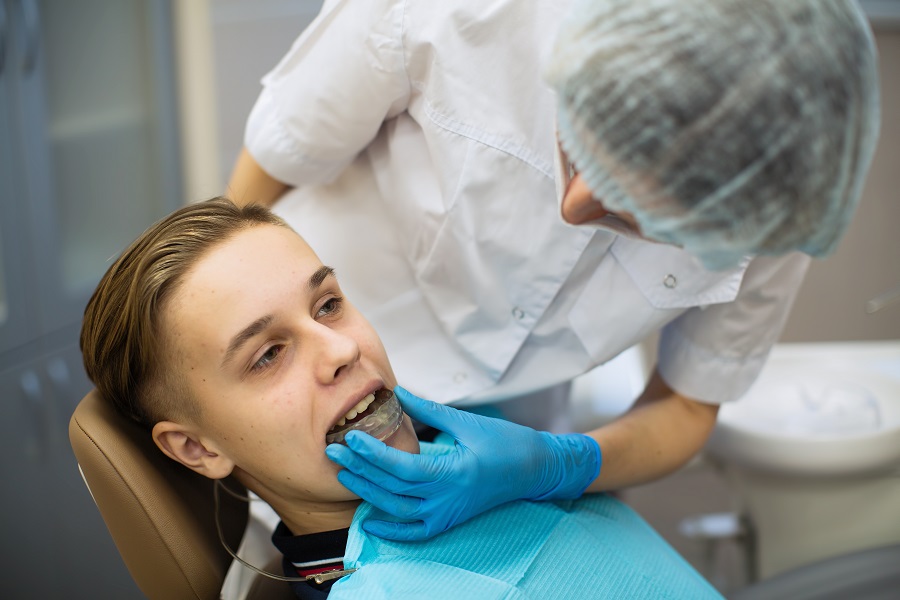What Is a Mouthguard?
 A mouthguard is designed to protect your teeth and gums. The guard fits over your teeth and gums and acts as a shield that protects from excessive wear. There is no age at which the use of mouth guards should start.
A mouthguard is designed to protect your teeth and gums. The guard fits over your teeth and gums and acts as a shield that protects from excessive wear. There is no age at which the use of mouth guards should start.
Your dentist is the expert who will be able to tell you if should use one or not. This will be based on the condition of your teeth, medical conditions such as bruxism (teeth grinding) that causes damage, and/or the risk of tooth and mouth injury based on your lifestyle. Anyone engaged in any sporting activity that could cause mouth or teeth damage should use one.
THE USES OF MOUTHGUARDS
Sports: Many sports, especially those that involve contact and those which involve high-velocity movement, have a high risk of tooth and gum injury. These include, but are not limited to wrestling, softball, cycling, skateboarding, hockey, boxing, football, any form of motor racing, gymnastics, and many more. The risk is not only of broken teeth and damaged gums; broken teeth can cause tongue and lip injuries.
Sleep Apnea: This makes a person to temporarily stop breathing while asleep. Asleep apnea mouth guard will adjust the position of the jaws while you are asleep to keep the airway open.
Bruxism: While clenching and grinding your teeth during sleep, the results can be tooth pain, sore gums, aching jaws and serious wear and damage to the teeth. Using a Night-guard while sleeping will keep the upper and lower teeth separated and prevent teeth grinding and jaw clenching.
Snoring: Snoring happens when the tissues of the upper airway vibrate. As in the case of sleep apnea, a mouth guard will keep the airway open so that it is unobstructed and the tissue does not vibrate.
THE TYPES OF MOUTHGUARDS
There are 2 main types of Mouthguards. The custom-fitted ones are made for you by your dentist. She/ He will use a mold to make an impression of your teeth to custom fit a mouth guard that is both comfortable and offers effective protection. These are the most effective.
The other type is the "boil-and-bite" which you can buy at any drug store. They are made of thermoplastic material which becomes soft when placed in hot water. Once the rough mouth guard has softened, you need to place it in your mouth, then close your upper and lower jaws. You must use your fingers to press the mouthguard against your teeth so that they become the right shape. Once the shape is right, the mouthguard should be run under cold water to harden it after which it is ready for use.
Stocks preformed are also available, but they rarely fit well or offer proper protection. All generally look the same, but there are subtle design variations that make some better for certain purposes. Your dentist can tell you which type is right for you.
If you are not certain whether you or someone in your family should use a mouth guard, consult your dentist. She/ He will not only give you expert advice but also will tell you about the pros and cons of the different types of guards and help you make the right decisions.
Call 408-725-1536 or email us at info@hillsdentalgroup.com to get a consultation if you need a nightguard.
- May 13, 2021
